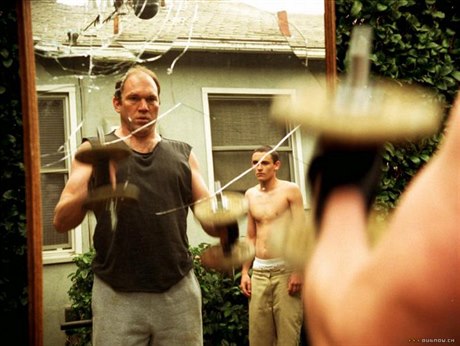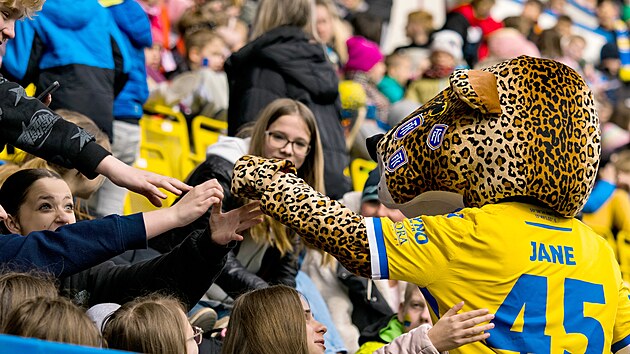Prague’s largest annual film festival, Febiofest, typically has a number of visiting actors and directors to bask in the spotlight. This year, however, it might not be the guests from either side of the camera who have worked on the largest number of well-known films, but someone who works with the camera itself, American cinematographer Edward Lachman.
The festival devoted a section to Lachman’s work, with screenings of “Far from Heaven”, “Howl” and “I’m Not There” as well as a film he co-directed with Larry Clark, “Ken Park.” These four films though are just a small sample of an impressive and varied career that includes shooting films for directors such as Wim Wenders, Steven Soderbergh, Ulrich Seidl and Sofia Coppola.
For Lachman, being in Prague reconnected him to the films that influenced him on his way to becoming a cinematographer. ‘I loved the way filmmakers like Vera Chytilová, Jan Němec and Ján Kadár mixed personal stories and reality in a narrative.’
“When I was starting out, the films I looked to were the films of Eastern European pedigree, and at that time Czechoslovak film was having its rennaissance. I loved the way filmmakers like Vera Chytilová, Jan Němec and Ján Kadár mixed personal stories and reality in a narrative, so that was always an inspiration for me,” Lachman told Czech Position.
The influence of the Czech New Wave, which he sees as an evolution of Italian neorealism, and the issues its films put on the screen, played a particularly important role in his own directorial feature debut, with the highly controversial film “Ken Park,” which he co-directed with Larry Clark of “Kids” fame.
“So when I did ‘Ken Park,’ I really tried to reference how time is used and how the camera plays with time, creating shots that play in real time and then overlapping that into the next shot using longer lenses and making it more a profile of the performers and having the camera follow the performance, rather than the actors being dictated by the camera,” he said. “I have always had that affinity to Eastern European filmmaking.”
Due to the controversy arising from the film’s depiction of teenage sex, incest and suicide it has never received a wide release in most countries, including the US and France, where it can only be watched by viewers over 18.
Most recently, Lachman shot his second film by Ulrich Seidl after 2007’s “Import/Export,” titled “Paradies” and currently in post-production. “I like to keep my foot in Europe and American independent film and kind of go back and forth.”
Photography + cinema
Another factor that led Lachman to become a cinematographer was a very similar affinity for the photography of Robert Frank and Larry Clark. “These were two photographers that were photographing from the inside out … I was influenced by how they both took such a personal approach to their imagery and that their point of view was so strong,” he said.
Lachman was very aware of Clark’s groundbreaking books of photography “Teenage Lust” and “Tulsa,” work that chronicled his own amphetamine addiction, so when he met Clark in Graz, Austria in the ’90s he told him that he felt that his books were like visual diaries.
“I asked him whether he had ever kept a written diary, and he said he had, so in my mind I thought how incredible it would be to create a filmic experience out of those books.”
Updating the original stories to fit the subject of Clark’s current photographic work – skaters – they ended up making a tough film on the limitations of adults and of how they take out their own frustrations and limitations on their children. “If ‘Kids’ was a look at the children, this was a look at the parents through the children’s eyes,” Lachman said.
Reimagining Mildred Pierce
Lachman had arrived in Prague just as his latest project, “Mildred Pierce,” a five and a half hour mini-series starring Kate Winslet and directed by Todd Haynes, was first aired on television in the US. Lachman described the shooting as eventful and strenuous, but said he was more than satisfied with the results.
Unlike the classic 1945 film noir version of Michael Curtiz, this “Mildred Pierce” more closely references the James Cain book from 1941. “The book really dealt with a woman’s plight – more like a Fassbinder character – and the relation between a mother and a daughter,” Lachman said. “Todd was originally drawn to it because he could see parallels with what is going on economically now.”
The greatest difference with the previous film version, besides perhaps the length, is the look of the film. Attempting to focus on the class and social struggle of the Depression-era, they opted for what Lachman described as a look of the ’30s through the more minimalistic visual prism of ’70s film.
“I tried to create early color photography, to mimic the uses and limitations of what color looked like back then to create this ’30s world,” he said.
Shooting stars
Lachman considers Kate Winslet one of his favorite actors to work with, along with Cate Blanchett and Julianne Moore. The list of actors he has worked with throughout his career is exhaustive, ranging from Al Pacino, Julia Roberts, Denzel Washington, Terence Stamp, Christian Bale and Madonna to musician Richard Hell and legendary director Nicholas Ray. ‘I had a very close relationship with Heath Ledger. He was going to direct his first film, which I was going to shoot.’
Shooting “I’m Not There” with Todd Haynes, Lachman also got to know the late actor Heath Ledger. “I had a very close relationship with Heath Ledger. He was going to direct his first film, which I was going to shoot. I thought he was very capable. He had made a number of short films and videos and I think he would have made it as a director,” he said.
At his death, Ledger was reportedly collaborating on an adaptation of the novel “The Queen’s Gambit” by Walter Tevis, in which he would also have acted.
Documenting a space and time
Of the many films he has shot, Lachman has a special affection for a two-man project he shot with a 16mm camera called “Tokyo-Ga.” His partner on the project was Wim Wenders, and the idea was to explore images of the Japanese capital through the films of director Yasujiro Ozu.
“It was about lost and found images in Tokyo because Ozu’s films were always about the modernization, the Americanization of Japanese culture, and we went back to try and find what was still existing then (in 1985),” he said. The two filmmakers worked alone, with Wenders doing the sound as Lachman operated the camera. Ozu’s favorite actor and cinematographor were interviewed in the movie as well.
“I really think that all films are really documents on a certain level — no performances are ever the same, the lighting is never the same, the camera movement is never the same — so I feel that film always documents a certain space and time,” Lachman said.




